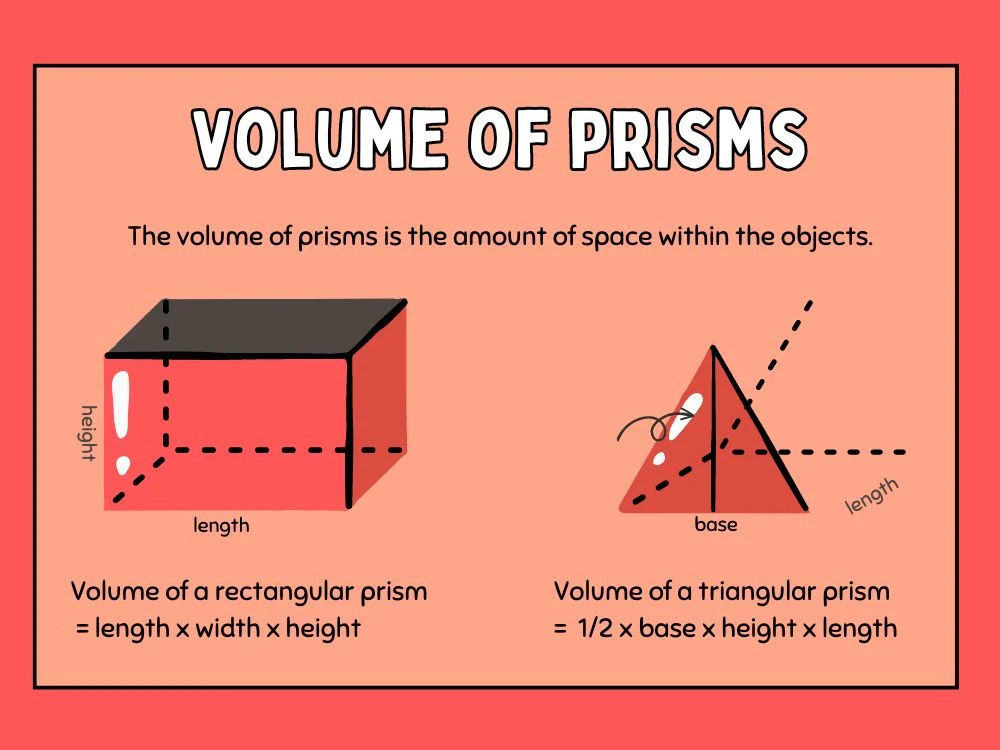
How to Find Volume: Leverage a Volume Converter in Various Business Sectors
Various business sectors require accurate volume measurement for multiple purposes. So, how to find volume accurately is a common type of question everyone has in the industry. The answer is simple where a volume converter tool is useful to find different volumes precisely.
The volume measurement is necessary in various sectors like construction, agriculture, food and beverage, and many others. However, manual calculations are prone to errors and are time-consuming. Thus, industries need an efficient solution that simplifies the process.
In this article, we will discuss the importance of volume measurement and learn the step-by-step process to find volume accurately. Also, this article discusses practical applications of volume measurements in various sectors.
Key Takeaways
- Understand how to find volume and the utilization of a volume converter.
- Understand the practical applications of volume measurements in different sectors.
Understand Volume

A. What is Volume?
Volume is an important concept in mathematics and it is commonly measured in cubic units like cubic meters, cubic feet, cubic inches, and so on. It represents the capacity of an object in three dimensions such as length, width, and height.
For example, if you consider a water tank with the following dimensions:
- Length: 5 meters
- Width: 3 meters
- Height: 4 meters
To find the volume, you have to multiply these dimensions together:
Volume = Length × Width × Height
= 5 meters × 3 meters × 4 meters
= 60 cubic meters
So, the correct volume of the water tank is 60 cubic meters.
B. How to Find Volume
Industry professionals need to find the volume of certain objects for multiple reasons. Thus, they have to go through a step-by-step process to easily find out the volume of any object. Here are the steps:
Step 1: Identify the Object’s Shape – When you have a requirement to find the volume of an object, you just need to identify the shape of the object. Simply find out how it looks. This step is the first thing to do and is crucial because the volume measurement is based on the object’s shape. Some common shapes are cubes, rectangles, cones, spheres, and cylinders.
Step 2: Dimensions Measurement – Once you have identified the shape, the second step that you have to follow is measuring the dimensions of the object. The measurement varies based on the object’s shape. If you take a cube or rectangular, you need to measure the length, width, and height dimensions. But, for cylinders, you have to measure the height and radius or diameter.
Step 3: Use the Right Formula - To calculate the volume accurately, you need to use the right formula for the object's shape. Here are the most common ones:
- Cube or Rectangular Prism Volume = Length × Width × Height
- Cylinder Volume = π × Radius^2 × Height (or π × Diameter^2 ÷ 4 × Height)
- Sphere Volume = (4/3) × π × Radius^3
- Cone Volume = (1/3) × π × Radius^2 × Height
Step 4: Do the Math - Now that you know the shape, have measured the dimensions, and have the right formula, it's time to calculate the volume. Make sure you use the same units for all measurements (meters/feet/inches/centimeters).
By following these steps, you can able to find the volume of an object accurately without any miscalculations or errors.
C. Utilization of Volume Converter Tool to Identify Different Volume Measurements
The volume converter tool helps identify different volume measurements in various units. This is useful for industry professionals when they need to compare between different measuring units.
Smart Tools AI volume converter assists users in figuring out multiple volume units and their specific numbers. It supports various units such as:
Acre-foot, Barrel (oil), Board foot, Bushel (US), Cubic Meter (m^3), Cubic centimeter, Cubic foot, Cubic inch (in^3), Cubic millimeter, Cubic yard, Cup, Fluid ounce (US), Gallon (UK), Gallon (US, dry), Gallon (US, liq), Gill (UK), Gill (US), Liter (new), Liter (old), and Ounce (UK, fluid)
Step-by-step guide to use the tool
- Navigate to the tools page
- Select volume units in the “From” and “To” sections
- Enter the numbers that you need for the conversion
- Obtain and verify the converted volume results
For example, if you need to convert 10 cubic meters to cubic feet, just select the appropriate units. You have to select cubic meters in the “From” menu and cubic feet in the “To” drop-down menu. Enter the number 10 in the text box given for the "From" section and you will immediately find the converted result on the top which could be 353.15 cubic feet.
Practical Applications of Volume Measurements in Various Sectors

01. Agricultural Sector
Accurate volume measurement is so crucial in agricultural sectors. The measurement is important to calculate different things like storage bin capacity, crop yields, and many others. For example, if you want to calculate the volume of a grain storage bin (The bin is typically shaped like a cylinder) with the following dimensions:
- Height: 4 meters
- Radius: 2 meters
To calculate the volume of this cylindrical storage bin, you have to use the formula relevant to the volume of a cylinder:
Volume = π × Radius^2 × Height
Based on the dimensional values of the storage bin, the volume is calculated as (π equals 3.14 or 22/7):
Volume = 22/7 × 2^2 × 4
= 3.14 × 4 × 4= 50.24 cubic meters
02. Construction Sector
Volume measurement is important for a variety of reasons in construction sectors. It helps perform certain tasks such as estimating material quantities, figuring out the concrete requirements, planning excavation projects, building an overhead tank, and several others.
For example, the construction sector requires the calculation of the volume of a rectangular concrete slab with the following dimensions:
- Length: 6 meters
- Width: 3 meters
- Height: 0.15 meters
Here it is vital to use the right formula to calculate the volume of this rectangular slab which is as follows:
Volume = Length × Width × Height
= 6m × 3m × 0.15m
= 2.7 cubic meters
03. Food & Beverage Sector
Food and beverage sectors require accurate volume measurements for production, correct recipes, good packaging, and inventory management. For example, If an F&B company is required to calculate the volume of a cylindrical storage tank for liquid ingredients with the following dimensions:
- Height: 2 meters
- Diameter: 1.5 meters
In this case, again the volume is calculated based on the shape of the object which is cylinder shaped. Here diameter dimension is taken instead of the radius and the calculation is as follows:
Volume = π × (Diameter/2) ^2 × height
Based on the given dimensional values the calculation is,
Volume = 3.14 × (1.5m/2) ^2 × 2m
= 3.14 × 0.5625m × 2m
= 3.53 cubic meters
04. Oil and Gas Sector
In the oil and gas industry, precise volume measurement helps perform important tasks such as identifying the oil barrel capacity, or gas reserves. For example, an oil and gas company wants to calculate the volume of an oil barrel with the following dimensions:
- Radius: 0.75 feet
- Height: 4 feet
To calculate the oil barrel’s volume, the following formula is used:
Volume = π × Radius^2 × Height
= 3.14 × 0.75ft^2 × 4ft
= 3.14 × 0.5625ft × 4ft
= 7.065 cubic feet
05. Lumber Sector
In the lumber sector, a precise volume measurement is crucial where it mostly uses board foot volume calculation. This is vital to evaluate the quantity of wood requirements and to determine the value of lumber inventory. For example, calculating the volume of lumber in board feet with the following dimensions:
- Length: 12 feet
- Width: 2.5 feet
- Thickness: 0.5 inches
Here, before you proceed to the volume calculation, you must convert the thickness to feet measurement. To convert inches to feet you can use a length converter.
Thickness in feet = 0.5 inches × 1/12
= 0.04167 feet
Now to calculate the volume of the lumber piece, you should use the following formula:
Bord Feet = (Length × Width × Thickness) / 12
= (12 feet × 2.5 feet × 0.04167 feet) / 12
= 1.25 feet / 12
= 0.104 board feet
Apart from these sectors, several other industries rely on accurate volume measurements. Automotive, shipping, retail, mining, and waste management are crucial examples of industries that utilize a volume converter for precise measurements.
Conclusion
Volume is a crucial measurement where industries use it to perform several tasks. To accurately find volume, industry professionals go through a certain step-by-step procedure. It includes finding the shape of the object, measuring the dimensions, using correct formulas, and doing the calculation part.
A volume converter tool helps identify a specific volume unit measurement relevant to another. This tool is so helpful for quickly finding out different volume measurements in real-time. Moreover, measuring volume is important for various business applications in different sectors.
FAQ
Q1: What is meant by volume?
A1: A volume is a mathematical unit that is used to measure the capacity of different objects.
Q2: How to find volume?
A2: To find volume, it is essential to follow certain steps. According to the shape of the object, the formula for measuring volume differs and users have to use the right formula to find the correct volume of an object.
Q3: How many cubic feet in a gallon?
A3: If we convert cubic feet to gallon then there are 0.133681 cubic feet found in a gallon.
Q4: How many ounces in a gallon?
A4: In a gallon, there are approximately 128 ounces (US, fluid) and 133.23 ounces (UK, fluid).
Q5: How many cups in a gallon?
A5: Approximately there are 16 cups in a gallon. Simply one gallon equals 16 cups.
Q6: What is a board foot?
A6: A board foot is a volume measurement unit that is commonly used in the lumber industry to quantify wood volume. A simple formula is used to calculate the board foot volume which is: (Length × Width × Thickness) / 12
.webp)